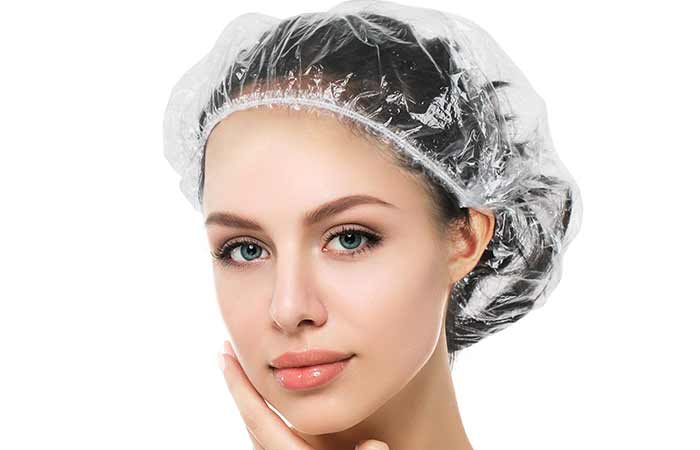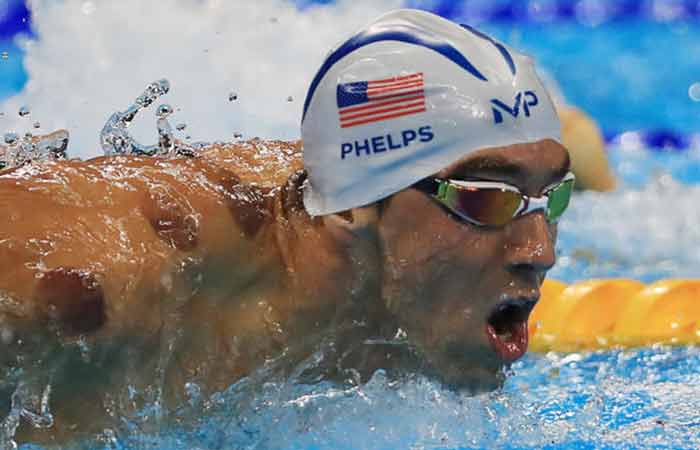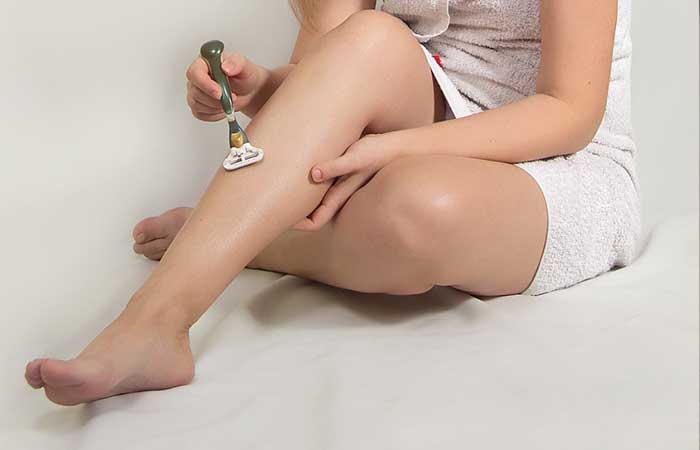Do Swim Caps Keep Your Hair Dry? The Truth & Waterproofing Tips
Swimming is a great way to get exercise, relax and have fun but spending time in the pool can really damage your hair from the chlorine and constant wetting and drying. Many swimmers opt to wear a swim cap to try and limit water exposure. But do swim caps actually keep your hair dry?
While caps protect tresses from getting totally drenched, their moisture-blocking abilities aren’t quite so magical. Read on for more details.
Do Swim Caps Fully Waterproof Hair?
The short answer is no, swim caps do not provide 100% waterproofing for your hair.
While caps act as a barrier, reducing the amount of water that comes into direct contact with the hair, they do not completely prevent wetness whenever your head is below the water line.
Over time, water will seep under the cap and saturate the hair. Thinner cap materials like latex absorb faster, while silicone provides a better water barrier. But no material offers a perfect seal for long swims. Moisture eventually penetrates.
It is also important to note that while swim caps serve multiple purposes, their primary function is not to keep your hair bone-dry but to reduce drag in water(hydrodynamics) by containing hair and keeping it in place while swimming.
Caps protect your hair from chlorine and other pool chemicals. They also maintain pool hygiene by preventing loose hair from entering the water

Factors that Impact Hair Wetness with Caps
Several factors can affect the effectiveness of swim caps in keeping water out. Here are some explained examples:
Cap size and Fit
The size and fit of a swim cap significantly impact how much water it will keep out during swimming lessons. Hence, choosing the right cap size and ensuring it fits well is important for covering your hair and reducing water seepage.
Caps that are too small may not fully cover your hair, it will leave parts of it exposed to the water. Conversely, too-large caps may have excess material that can lead to gaps and water seepage.
Choosing the right cap size allows for better hair coverage and minimizes the chances of water reaching your hair.
Additionally, a well-fitted swim cap creates a tighter seal around your head, reducing the likelihood of water seepage. It minimizes gaps and ensures a more secure barrier between your hair and the water.
When the cap fits snugly, it limits the entry points for water, especially around your hairline and ears, thus reducing the amount of water that can reach the hair.
Despite that, a properly fitted cap also helps to reduce movements and displacement while you are swimming. Caps that stay in place maintain their effectiveness in keeping water out, while loose-fitting caps are more prone to shifting and in turn, allow water to enter.
Further reading: How to Put on a Swim Cap: Long Hair, Curly, Braids & Take-Off Tips
Cap Material
The material of your swim cap impacts how much water can seep through over time. Some materials are more permeable than others.
Silicone – Provides the best water resistance and barrier from moisture absorption.
Neoprene – Also repels water well for minimal seepage into the hair.
Latex – More porous and prone to allowing water through to the hair.
This table compares the permeability of common cap materials:
| Cap Material | Permeability Level | Hair Wetness |
| Silicone | Low | Slowest absorption |
| Neoprene | Low | Slow absorption |
| Lycra/Spandex | Medium | Moderate absorption |
| Latex | High | Fastest absorption |
From the table above, silicone and neoprene offer the most water resistance and slowest moisture absorption. Latex allows water through most readily. Selecting a silicone or neoprene cap can better protect hair from getting wet while swimming.
Further Reading
- Neoprene Swim Caps -Pros, Cons and More!
- Silicone vs Latex Swim Caps: A Comprehensive Comparison
- Lycra Swim Caps Guide
Intensity of Swimming
The intensity of the swimming activity can affect the amount of water that can potentially penetrate the swim cap.
During leisurely swimming or gentle floating, there is generally less water disturbance, resulting in minimal water entry. However, during more intense and vigorous swimming, such as competitive swimming or water sports, the increased movement and force can cause water to find its way into the cap, potentially leading to some water in the hair.
During vigorous movements such as dives, flips, or sudden changes in direction, there is a higher likelihood of water penetrating the cap. These movements can displace the cap, create gaps, or cause water to enter through openings, increasing the chances of hair getting wet despite wearing a swim cap.

Condition of the Cap
A worn-out or damaged cap may compromise its ability to provide a reliable barrier against water penetration. Here are some effects of a worn-out or damaged cap on its ability to keep hair dry:
Decreased elasticity: Over time, swim caps lose their elasticity, resulting in a looser fit. This can create gaps and allow water to seep into the cap, making it less effective in keeping the hair dry.
Increased porosity: Damage, such as small tears or holes, can increase its porosity. Water can easily penetrate these areas, reducing the cap’s ability to keep hair dry.
Weakened water repellency: Swim caps made of silicone or latex often have water-repellent properties. However, prolonged use may diminish these properties, making the cap less effective in repelling water and keeping hair dry.
Hair Type and Length
Hair type and length can significantly impact the water resistance of swim caps and determine how much water reaches the scalp. Here’s how hair type and length affect water resistance:
Hair Type:
The type of hair, whether curly, straight, thick, or thin, can affect the water-resistance provided by swim caps.
Curly hair tends to have more volume and can create additional space within the cap, potentially allowing more water to enter.
Straight hair, on the other hand, tends to lie flatter against the scalp, potentially creating a tighter seal and reducing water penetration.
Hair Length
The length of the hair can also influence how much water reaches the scalp.
Shorter hair is generally easier to fit under a swim cap, allowing for a more secure seal and minimizing water entry.
Longer hair, even when tucked correctly in a swim cap, some water may still find its way through due to its movement because of weight and water pressure.
Exposure duration
The longer you swim, the more chance for water to soak through.
How to Keep Hair Dry while Swimming
Here are some tips to keep your hair dry and protect it while swimming with or without a swim cap.
Ensure a Snug and Secure Fit
A snug fit is a key factor contributing to swim caps keeping your hair dry. When a swim cap fits tightly over your head, it creates a seal that helps to minimize water penetration and reduce the chances of water getting in and reaching the hair.
- Carefully stretch the cap over the hair to eliminate gaps where water can seep in. Aim for a tight seal.
- Ensure full coverage of hair, tucking in ends inside the cap. Loose strands outside can wick moisture.
- Tie long hair in a low bun or braid to contain it more securely under the cap.
- Adjust cap placement during swimming if it starts to slide up and expose hair.
Latex and silicone caps tend to provide a tighter seal than lycra caps, which are more stretchable and may offer a different level of water resistance.
In addition to preventing water from entering, a tight-fitting swim cap also reduces drag in the water. The cap’s streamlined profile allows swimmers to move through the water more efficiently, improving their performance.
Wet Hair before Capping
Dampening hair prevents air pockets between the cap and hair that fill with water.
Use water or conditioner to saturate hair. Don’t wring out excess moisture before capping.
Wetting hair also allows for easier stretching and sealing of the cap over the head. Consider using a leave-in conditioner.
Double Capping
Use a latex or silicone cap liner under a looser lycra cap for better water resistance while retaining stretch. The double cap method improves dryness.
Limit Long Exposures
Remember to take short, frequent breaks from swimming to adjust your cap placement.
For long practices or meets, pack an extra cap to swap into if your first cap gets saturated.
Tighten cap ties or straps periodically if present to maintain a snug fit.
Rinse out Chemicals after Swimming
Quickly rinse hair after exiting the pool to wash out absorbed chlorine and chemicals.
Shampoo and condition to remove residues that damage and dry out hair over time.
Pat hair dry gently instead of rubbing harshly. Limit blow drying which can worsen chemical damage.
Secure Goggles Properly
If you wear goggles, make sure they are snugly positioned over the cap. Goggles that are too tight or poorly positioned can create gaps for water to enter.
Use the Right Cap
Opt for a tight-fitting 100% silicone cap that creates a snug seal around your head. You can also try out caps with chin and neck straps to limit openings for water to sneak in.
Further Reading: Best Waterproof Swim Caps to Keep Your Hair Dry and Protect it
Use a Shower Cap with your Regular Swim Cap
Shower caps are made up of waterproof material, meaning that your lock touch won’t water. Simply slip a shower cap, like the Auban Disposable, under your regular silicone cap for an extra waterproof barrier. Unfortunately, a shower cap cannot work on its own since it will slip off.

Proper Head Position
Excessive head movement in water can disrupt the cap’s seal. Focus on maintaining a streamlined body position and minimizing unnecessary head tilting.
Another option to almost completely protect your locks from splashes is to swim with strokes that allow your head to high above the water. You can try head-high freestyle breaststroke.
Apply Natural Oils for Added Protection
To enhance your hair’s natural defenses against chlorine, apply natural oils like olive oil or coconut oil. Olive oil protects keratin with antioxidants and vitamins, while coconut oil moisturizes hair and scalp effectively and affordably.

When Staying Dry Matters Less
For very short swims of just a few laps, or infrequent recreational swimming, caps may provide sufficient dryness.
If you don’t mind hair getting wet or have hair that dries quickly, caps may work fine as is. Swimming primarily for exercise diminishes the priority of keeping hair high and dry.
For frequent swimmers who shampoo and condition regularly anyway, some dampness from a cap may be negligible.
The Verdict
While caps, especially the silicone and neoprene styles, can, to some extent protect your locks from getting socked up, they cannot keep your hair 100% dry during swimming.
Following additional tips like pre-wetting, ensuring a snug and secure fit, limiting exposure and double capping can reduce wetness even more.
Besides some dryness, swim caps offer many bonuses like keeping hair contained and protecting from chlorine. The ideal cap is one that fits snugly and makes you feel confident and comfortable in the pool.






